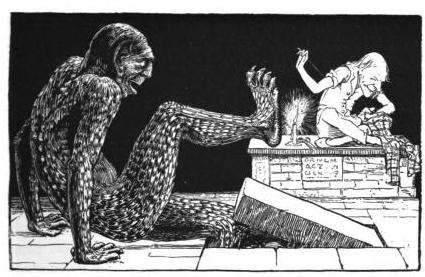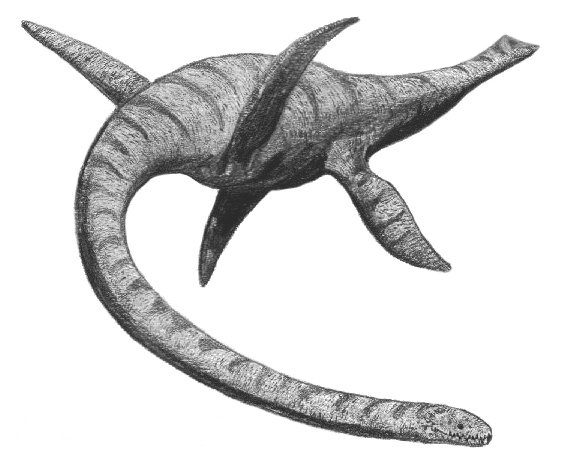Friday Fun Facts - 8/23/2013

Here are this week's Friday Fun Facts about Diana Gabaldon's books.

1) A hussif (also called a "housewife") is a portable sewing kit. I had never heard the term until I read A BREATH OF SNOW AND ASHES.
Jamie checked his saddlebags once more, though he had done it so often of late that the exercise was little more than custom. Each time he opened the left-hand one, he still smiled, though. Brianna had remade it for him, stitching in loops of leather that presented his pistols, hilt up, ready to be seized in an emergency, and a clever arrangement of compartments that held handy his shot pouch, powder horn, a spare knife, a coil of fishing line, a roll of twine for a snare, a hussif with pins, needles, and thread, a packet of food, a bottle of beer, and a neatly rolled clean shirt.The photo above shows what an 18th-century soldier's hussif looked like. For more photos, look here.
(From A BREATH OF SNOW AND ASHES by Diana Gabaldon, Chapter 25, "Ashes to Ashes". Copyright© 2005 by Diana Gabaldon. All rights reserved.)
According to Kathryn Kane of The Regency Redingote,
Hussifs for soldiers tended to be smaller than a woman might make for herself. Inside would be found a selection of replacement buttons, for both the soldier’s uniforms and his civilian clothes, a packet of needles, a paper of pins, usually a thimble, and a notched length of wood or cardboard with a selection of threads wrapped around it in the notched sections. A small pair of scissors might also be included, though this was less common, as many soldiers carried a pocket knife which would serve the purpose of cutting threads. All of these items would be placed in the pockets of the hussif, then it would be rolled up, tied shut and slipped into the soldier’s pocket or his haversack.If you want to try making your own hussif, there are step-by-step instructions here.

2) Aloe vera has been used for thousands of years for the treatment of minor burns and skin abrasions. (Photo from Wikipedia.)

Here's another view of the aloe vera plant.
The afternoon sun was hot on the white limestone rocks, casting deep shadows into the clefts and hollows. I found what I was looking for at last, growing from a narrow crack in a giant boulder, in gay defiance of the lack of soil. I broke a stalk of aloe from its clump, split the fleshy leaf, and spread the cool green gel inside across the welts on Jamie’s palm.For more about the medicinal uses of aloe vera, look here and here.
"Better?” I said.
“Much.” Jamie flexed his hand, grimacing. “Christ, those nettles sting!”
“They do.” I pulled down the neck of my bodice and spread a little aloe juice on my breast with a gingerly touch. The coolness brought relief at once.
(From DRAGONFLY IN AMBER by Diana Gabaldon, Chapter 29, "To Grasp the Nettle". Copyright© 1992 by Diana Gabaldon. All rights reserved.)

3) When I first read VOYAGER, I was baffled by Claire and Roger's conversation about an old fairy tale:
‘See’st thou this great gray head, with jaws which have no meat?’ ” Roger quoted. “You know the story? The little tailor who spent the night in a haunted church, and met the hungry ghost?”The story they're referring to is called "The Sprightly Tailor", by Joseph Jacobs (1854-1916). You can read the full story here.
“I do. I think if I’d heard that outside my window, I’d have spent the rest of the night hiding under the bedclothes."
(From VOYAGER by Diana Gabaldon, Chapter 22, "All Hallows' Eve". Copyright© 1994 by Diana Gabaldon. All rights reserved.)
4) You may recall from ECHO that Claire speculated that Emily's difficulties in carrying a child to term were caused by "an Rh problem":
“If a woman’s blood is Rh-negative, and her husband’s blood is Rh-positive,” I explained, “then the child will be Rh-positive, because that’s dominant--never mind what that means, but the child will be positive like the father. Sometimes the first pregnancy is all right, and you don’t see a problem until the next time--sometimes it happens with the first. Essentially, the mother’s body produces a substance that kills the child."The photo above, from hematology.org, shows the abnormal blood cells of a newborn infant from Iraq,
(From AN ECHO IN THE BONE by Diana Gabaldon, Chapter 35, "Ticonderoga". Copyright© 2009 by Diana Gabaldon. All rights reserved.)
a full term male with severe RhD HDN [hemolytic disease of the newborn]. The baby died few hours after birth. Baby blood group is O RhD positive Mother blood group is O RhD negative....The OB/G specialist expected that this may happen, but as there is no intra-uterine transfusion in Baghdad, the baby had no chance to survive.For more about RhD incompatibility, look here and here.

5) Claire tells Roger in VOYAGER that the creature she saw in Loch Ness was probably a plesiosaur, a type of aquatic reptile that supposedly died out 65 million years ago, along with the dinosaurs. This drawing, from Wikipedia, is an artist's recreation of what it might have looked like.
A great flat head broke the surface not ten feet away. I could see the water purling away from keeled scales that ran in a crest down the sinuous neck. The water was agitated for some considerable distance, and I caught a glimpse here and there of dark and massive movement beneath the surface of the loch, though the head itself stayed relatively still.
I stood quite still myself. Oddly enough, I was not really afraid. I felt some faint kinship with it, a creature further from its own time than I, the flat eyes old as its ancient Eocene seas, eyes grown dim in the murky depths of its shrunken refuge. And there was a sense of familiarity mingled with its unreality. The sleek skin was a smooth, deep blue, with a vivid slash of green shining with brilliant iridescence beneath the jaw. And the strange, pupilless eyes were a deep and glowing amber. So very beautiful.
(From OUTLANDER by Diana Gabaldon, Chapter 19, "The Waterhorse". Copyright© 1991 by Diana Gabaldon. All rights reserved.)
Here's a video (about 45 minutes long, but very interesting) about the Loch Ness monster and various theories about it.
Not everyone is convinced by the plesiosaur theory; here's a rebuttal. But whether you believe it or not, it's fun to speculate! <g>
I hope you enjoyed these Friday Fun Facts! Look here to see all of my Friday Fun Facts blog posts, and please come back next week for more.








Comments